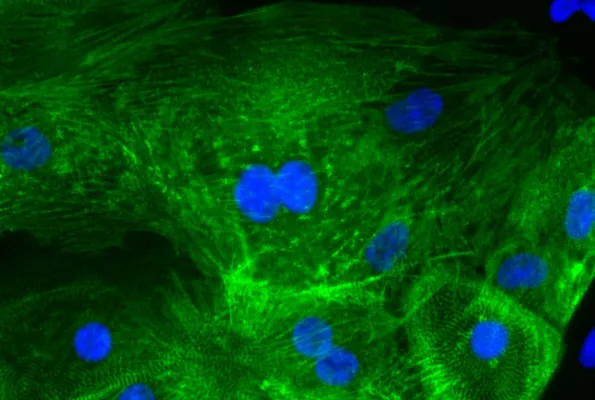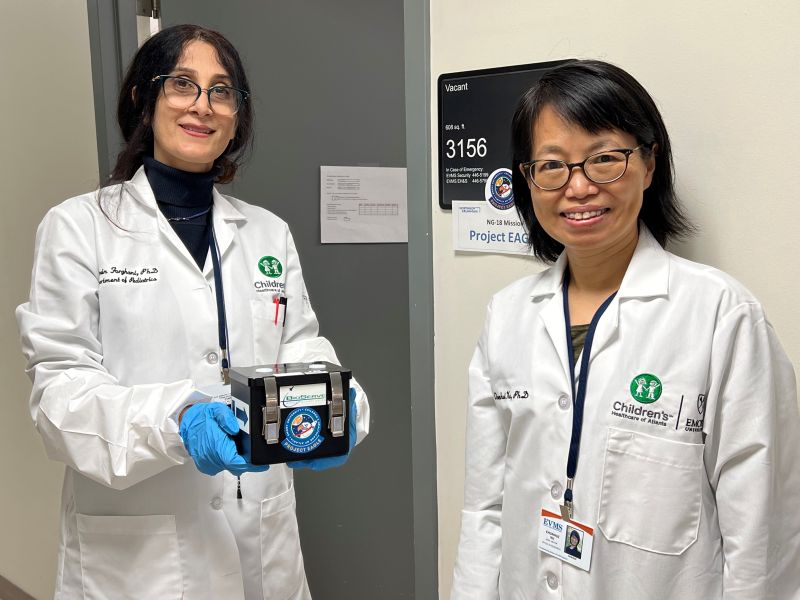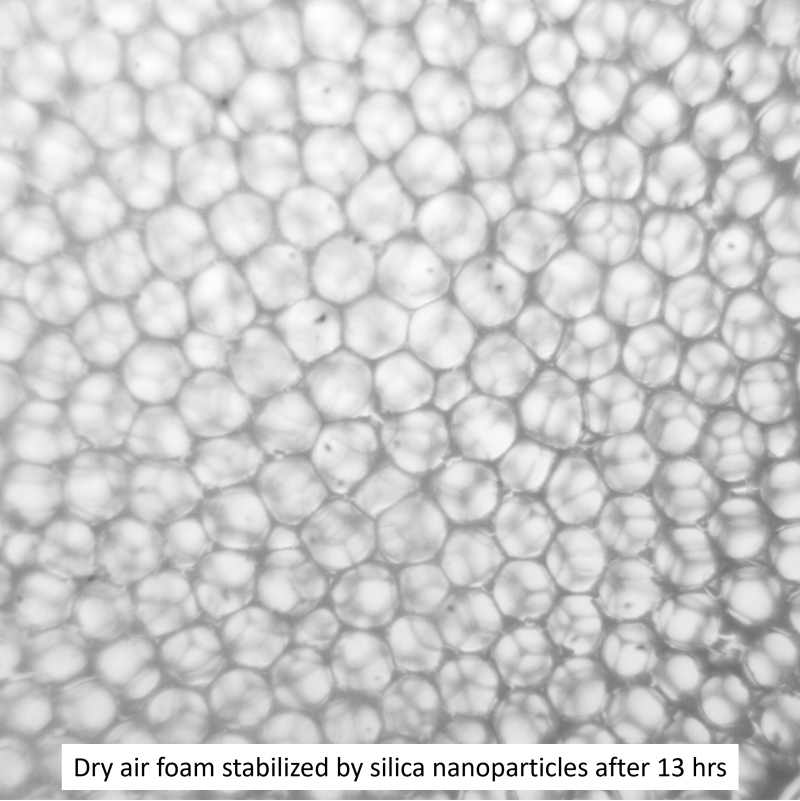
Experiments in space will deliver benefits on Earth
7 NSF-driven projects are heading to International Space Station
Science experiments that could advance treatments for heart disease and osteoporosis, develop early warning systems for dangerous mudflows, and lead to more efficient power plants and improved food and personal care products will be conducted aboard the International Space Station, or ISS, where the microgravity environment could offer new insights into solving challenges we face on Earth.
The launch Nov. 7 from Virginia's Mid-Atlantic Regional Spaceport at NASA Wallops Flight Facility carried supplies for the space station crew and 40 experiments. A record seven of those are sponsored by the U.S. National Science Foundation in partnership with the Center for the Advancement of Science in Space, which manages the U.S. portion of the ISS National Laboratory.
NSF has supported research projects on the space station since 2015, according to William Olbricht, acting deputy director for NSF's division of Chemical, Bioengineering, Environmental, and Transport Systems. "The program that we run emphasizes projects that benefit life on Earth," he said. "People who propose experiments for our support must present a real and compelling argument about how the experiments in microgravity can produce results that benefit engineering on Earth.
"In microgravity, we're able to remove the effect of gravity and see the effects of other forces that are sometimes hard to reveal on Earth. So the results of these experiments can help us deduce the roles of these forces on various systems of interest. They provide new information about the physics, the chemistry and biology of these systems that we can use to optimize processes that take place here on Earth."
Below is a rundown of the research that will take place aboard the ISS and the impact researchers hope to have.
Hearts in space
Heart disease is the leading cause of death in the U.S. Research shows that cardiac muscle cells generated from stem cells could be used to replace damaged cells in patients, but it's hard to grow these cells to maturity in a typical laboratory. Currently, when scientists grow cardiac muscle cells in a dish, they look like heart cells at an early embryonic stage. The microgravity of the space station provides a unique environment to accelerate the maturation of cardiac muscle cells using tissue engineering, which is a significant advance.
A research team led by Chunhui Xu, associate professor in the Department of Pediatrics at the Emory University School of Medicine will monitor the specially cultured cells following the spaceflight and develop a technology to promote maturation in microtissues that are suitable for large-scale production on Earth. Their findings could offer fresh insights to advance regenerative bioengineering.
Burns and rain bursts
A 15-minute burst of rain in January 2018, in Montecito, California, turned a wildfire-ravaged hillside into a mudflow that caused 21 deaths and $421 million in damages. The destruction was so severe because the burned soil and vegetation repelled water, keeping it from being absorbed into the soil, as rainwater rushed downhill, picking up rocks, boulders and other debris. Climate change and global warming are fueling the frequency of wildfires around the world, leaving even more burn-scarred slopes vulnerable to catastrophic mudflows.
A team led by Ingrid Tomac, an assistant professor at the University of California San Diego's Structural Engineering Department, will conduct experiments on the space station and on the ground into the unusual behaviors of mudflows, which consist of sand, water, trapped air and other elements. Gravity plays a crucial role in how they form by driving air up and out of the mixture and particles down to the bottom of the water, Tomac said. Comparing the results could offer fresh insights into the role of gravity in mudflow internal structure and dynamics that could lead to better early warning systems and risk assessments.
In the bones
Osteoporosis weakens bones as people age — but microgravity weakens them even more. According to a 2015 paper on spaceflight osteoporosis, astronauts typically lose more bone mass in a month than postmenopausal women on Earth lose in an entire year. Despite a deep understanding of the outcomes of bone formation and loss in bone biomechanics, the ways in which applied loading affects the cells and causes bone loss and osteoporosis isn't entirely clear. This makes the space station an ideal platform to study bone health and deconditioning.
Allen Liu, associate professor of mechanical engineering at the University of Michigan, is leading an experiment to quantify the effect of microgravity on the stiffness of osteoblasts, or bone-forming cells, and find out if pressure — for instance, a compression spacesuit — could maintain bone cell function in microgravity conditions. The project will apply mechanical compression to osteoblasts to see if they recover their response to mechanical stimulation and compare the results with measurements performed on Earth. His findings could increase the understanding of how changes in bone loading cause bone loss and osteoporosis and support improved prevention and treatment.
Oil and water
It's well known that oil and water don't mix. They're what's called immiscible fluids — the individual components will separate from each other as the lighter fluid rises to the top and the heavier one sinks to the bottom. Immiscible fluids are found in nature, chemical processing and manufacturing.
An experiment led by Ranga Narayanan, distinguished professor of chemical engineering at the University of Florida, will investigate the Faraday instability, which occurs when the interface between two immiscible fluids is subjected to mechanical vibrations. That interface can be rendered unstable under certain conditions, which can lead to waves forming and even rupture, resulting in the two liquids mixing. Understanding the onset of such instabilities and the evolution of the interface when it becomes unstable can help in process design and interpreting experimental and process data involving immiscible fluid systems.
The results could lead to a better understanding of how liquids interact under different conditions and new ways to mix liquids microscopically for both medical and engineering applications, such as drug delivery, jetting processes similar to ink-jet printing, fuel spraying, bubble removal for cleaning surfaces and cooling of electronics in satellites, high-flying aircraft and high-speed computers.
Bubbles in space
Other experiments will take a look at bubbles in microgravity.
Assistant professor of chemical engineering Jing Fan and chemical engineering professor Charles Maldarelli, both of the City College of New York, will use the space station — where bubbles and drops can freely assemble without being confined and the coarsening process can be isolated and studied — to try to answer some fundamental questions about foams and emulsions and improve their performance. Foams and emulsions appear in food products, such as salad dressing and ice cream and personal care products, such as shaving cream, cosmetics and detergents. They're also central to distillation, oil recovery, removal of environmental pollutants and other technologies and industries.
Another experiment led by Yangying Zhu, assistant professor of Mechanical Engineering at the University of California, Santa Barbara, seeks to find a new method to actively control bubbles and droplets by exploiting liquids whose surface tension can be changed with light. This research has the potential for a wide range of terrestrial applications, including improving the efficiency of power plants that produce most of the electricity in the U.S., heating and cooling of buildings, desalination and distillation.
Finally, a collaboration between Auburn University and the University of California, Davis, will study boiling heat transfer from microstructured surfaces. The inability of vapor bubbles to detach from a surface impedes efficient heat dissipation from electronic components in space. This research will attempt to overcome this limitation through the use of engineered surfaces and can lead to commercial benefits in areas such as consumer and aircraft electronics.





